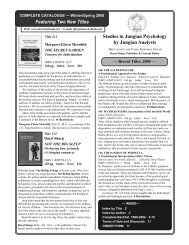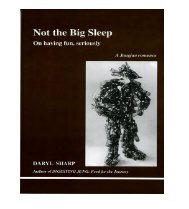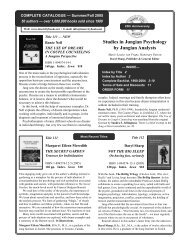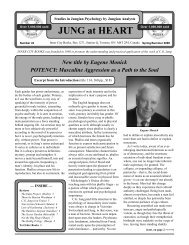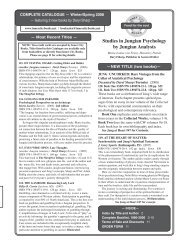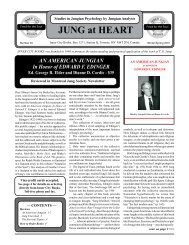Personality types: Jung's model of typology - Inner City Books
Personality types: Jung's model of typology - Inner City Books
Personality types: Jung's model of typology - Inner City Books
- No tags were found...
Create successful ePaper yourself
Turn your PDF publications into a flip-book with our unique Google optimized e-Paper software.
70 Introversion and the Four FunctionsThinking in the introverted attitude is oriented primarily bythe subjective factor. Whether the thinking process focuses onconcrete or abstract objects, its motivation comes from within.Introverted thinking depends on neither immediate experiencenor generally accepted, traditional ideas. It is no less (ormore) logical than extraverted thinking, but it is neither motivatedby objective reality nor directed toward it.External facts [writes Jung] are not the aim and origin <strong>of</strong> thisthinking, though the introvert would <strong>of</strong>ten like to make histhinking appear so. It begins with the subject and leads backto the subject, far though it may range into the realm <strong>of</strong> actualreality. . . . It formulates questions and creates theories, itopens up new prospects and insights, but with regard to factsits attitude is one <strong>of</strong> reserve. . . . What seems to it <strong>of</strong> paramountimportance is the development and presentation <strong>of</strong> thesubjective idea, <strong>of</strong> the initial symbolic image hovering darklybefore the mind's eye. 84In other words, where extraverted thinking seeks to get thefacts straight and then think about them, introverted thinkingis concerned with the clarification <strong>of</strong> ideas, or even the mentationprocess itself, and only then (perhaps) with their practicalapplication. Both excel at bringing order into life; one worksfrom the outside in, the other from the inside out.Introverted thinkers, being by definition not so practicalminded, tend to be theoreticians. Intensity is their aim, notextensity. They follow their ideas inward, not outward. VonFranz describes them as follows:In science these are the people who are perpetually trying toprevent their colleagues from getting lost in experiments andwho, from time to time, try to get back to basic concepts andask what we are really doing mentally. In physics, there isgenerally one pr<strong>of</strong>essor for practical physics and another fortheoretical physics: one lectures on the Wilson Chamber and84 Ibid., par. 628.



